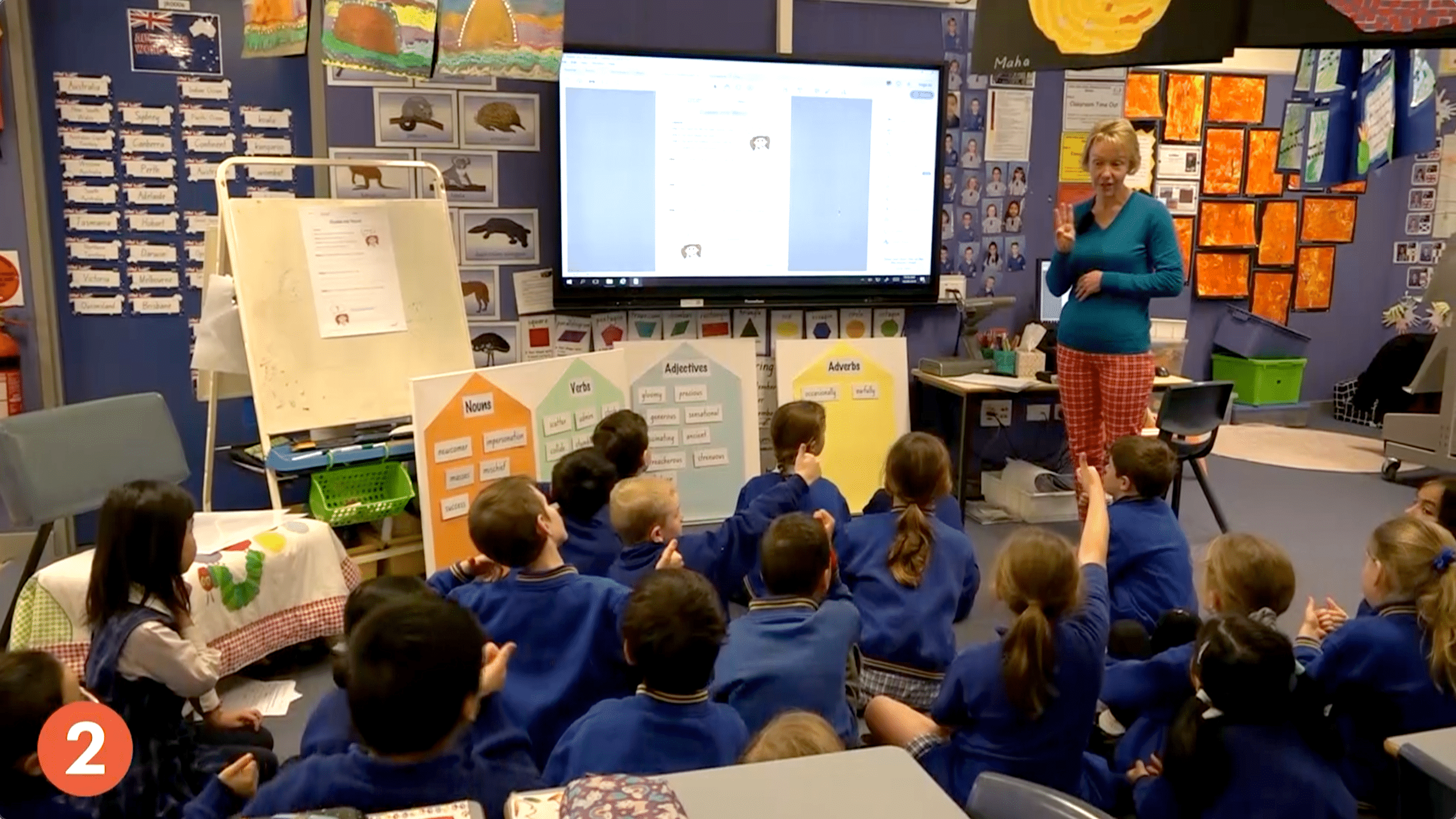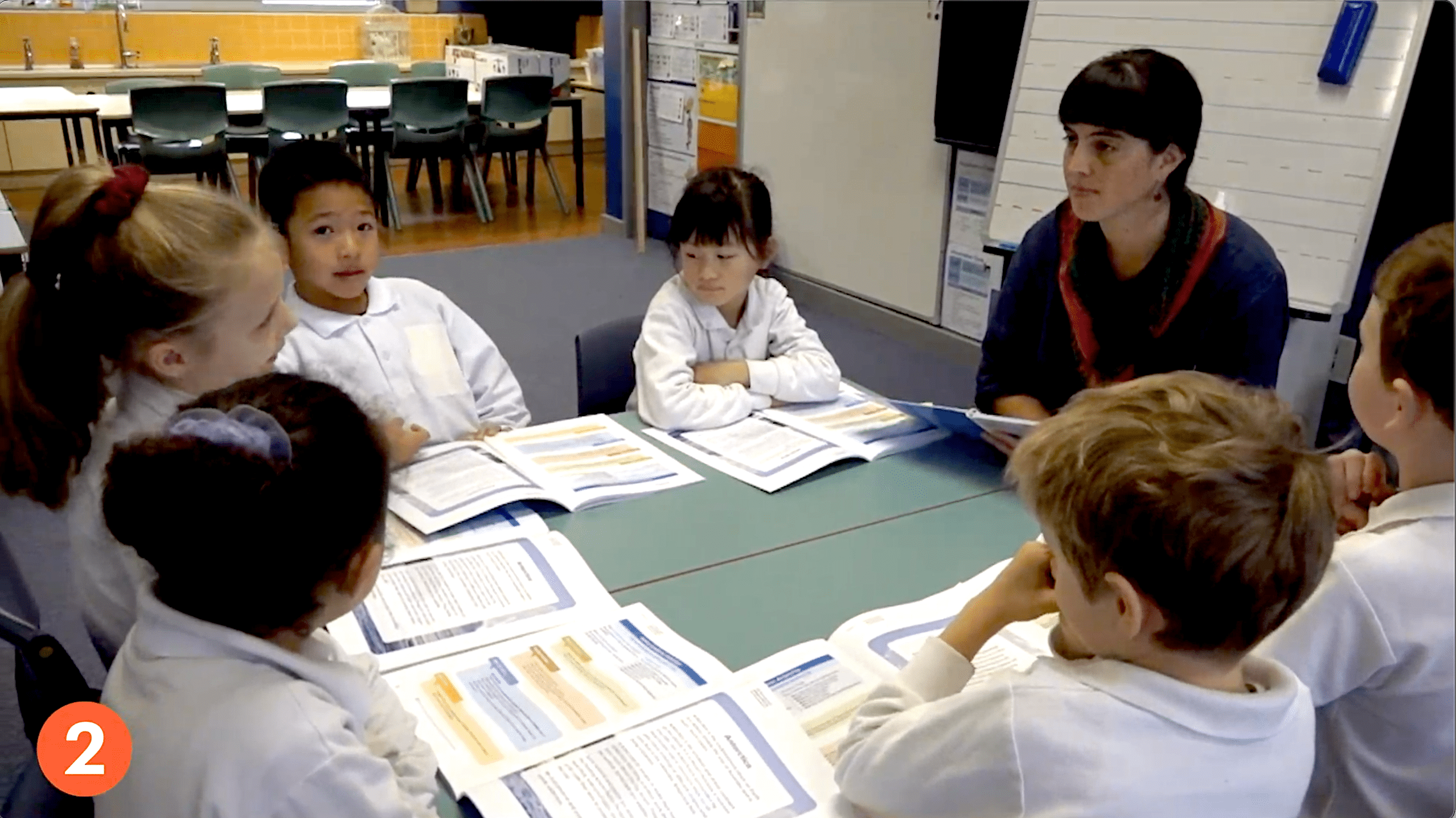To ensure a successful InitiaLit implementation, it is recommended that InitiaLit–2 is rolled out after InitiaLit–F and InitiaLit–1 have been embedded in the school. This staggered start can help schools avoid becoming overwhelmed by change, and so schools who have adopted this approach may now be considering bringing in InitiaLit–2 for the 2022 school year.
The Year 2 program supports students on their way to reading independence, consolidating reading and spelling skills while developing fluency, comprehension, grammar and vocabulary. Discover how you can get set for success in 2022 with InitiaLit–2!
Class structure
The program will require 60-90 minutes per day, beginning with explicit whole-class instruction, followed by teacher-led reading groups or independent work. Independent work includes a mix of spelling, writing and reading activities. There are four key components that will make up your weekly literacy program:
- Spelling: three sessions per week
- Comprehension and fluency: two sessions per week
- Grammar: 8–10 sessions per term, best scheduled alongside a writing program
- Storybook reading: four sessions per book, covering one book every 2-3 weeks
Curriculum-based assessments will be used to monitor progress throughout the year.

A Kit for each classroom
You may be familiar with InitiaLit Kits from Foundation and Year 1. One InitiaLit–2 Kit will provide each classroom and teacher with a year of carefully structured lessons and all the accompanying supporting resources and assessment, including:
- A Teacher Manual, providing an overview of the program
- Handbooks for each
- Assessment Manual
- 25 Spelling Workbooks* (these are consumable items that need to be replaced each year, available as a downloadable or for purchase from MultiLit)
- 25 RAD (Read and Discuss) Reading Books*
- A Wheldall Assessment of Reading Passages (WARP) Kit
- Concept and spelling posters
In addition, downloadable resources include:
- PowerPoint presentations for lesson delivery
- Worksheets, activities and games
- Writing templates for use alongside the Storybook component
- Information for parents
- Certificates
- Assessment and tracking forms and templates
- Lesson planning records, and checklists
*For classes with more than 25 students, additional books will need to be purchased or downloaded (for Spelling Workbooks).
Program components
Spelling
Spelling lessons focus on consolidating the advanced alphabetic code, revising spelling patterns taught in Year 1 as well as introducing new spelling patterns and rules. Children will learn to apply phonological, orthographic and morphological knowledge to help them spell with confidence. Tricky (irregular) high-frequency words are also taught. The ability to spell proficiently impacts on the quality of children’s writing.
InitiaLit spelling lessons are scripted to ensure clear explanations, consistent terminology, sufficient guidance and adequate review.
Comprehension and Fluency
In InitiaLit–2, the instructional focus moves to comprehension and reading fluency. As children become proficient at using the alphabetic code to work out words accurately, they have a greater capacity to think about what they are reading. This component of InitiaLit–2 works on reading fluency and introduces children to different comprehension strategies to help them successfully navigate text.
Lessons are based around the imaginative, informative and persuasive texts in the RAD (Read and Discuss) Reading Book included in the program. Children will have many opportunities to practise their reading using echo reading, choral reading and paired reading.
Detailed Comprehension Handbooks will guide teachers through planning and delivery. To encourage participation, lessons include teacher-facilitated class discussion, ‘turn and talk’ and ‘think, pair, share’. These comprehension and fluency sessions encourage children to think and talk about what they are reading in a supportive environment.
The program timetables two comprehension and fluency lessons of 40-45 minutes each week, followed by a 20-minute session of consolidation. We recommend these lessons are delivered on alternate days to spelling lessons.
Grammar
InitiaLit grammar lessons can be used to supplement any writing program. Students will be explicitly taught about nouns; pronouns; adjectives; verbs; adverbs; prepositions; conjunctions; past, present, irregular and future verbs; and speech in writing, with an extended writing task at the end of the program.
Because grammar instruction is proven to be more effective when directly linked with children’s own writing, we strongly encourage you to complete the accompanying writing activites, and to link grammar lessons with your own writing program or the writing activity in the Storybook component of InitiaLit.
The lessons of 20-25 minutes can be spread across the year.
Storybook reading
Storybook lessons develop vocabulary, oral language and listening comprehension skills. A well-structured writing task connected to each storybook can be completed as part of your writing program.
Each storybook is studied over a couple of weeks using the comprehensive lesson plans found in the handbook. The program culminates in two novel studies. A primary focus of these lessons is to enrich children’s vocabularies. Children are introduced to new and interesting words in a fun and engaging way. All books featured in the program will need to be purchased.
Initial assessment
The InitiaLit–2 screener at the start of the year will provide teachers with essential information about children’s reading and spelling capabilities. This information can be used to establish reading groups and, along with the WARP assessment (Wheldall Assessment of Reading Passages), will also help identify children who may need additional reading and spelling support.
The WARP is included with the Kit. This timed test is easy to administer and will give a good indication of general reading accuracy and fluency at the start of the year and should also be used to monitor children’s progress. It has benchmarks to identify children who are falling in the bottom 25th percentile. These are the children who should receive intervention, using a program such as MiniLit Sage.
An informal writing sample will complete the assessment set. Provide a story starter or picture and a five-minute writing task and review the number and type of errors as the children progress through the year.
If there are significant gaps for the whole group, you may need to cover some ground on InitiaLit–1 first. Early identification means early intervention and for struggling individuals, MiniLit Sage may better serve their needs.
Progress monitoring
InitiaLit–2 handbooks will guide teachers through curriculum-based assessments to monitor progress throughout the year. These will track comprehension and spelling. The WARP progress monitoring passages are used more regularly to track reading progress.
Differentiation in InitiaLit–2
Small group work and the setting of independent activities is your daily opportunity for differentiation. Groups with lower abilities will need more time for supported reading and discussion, while more capable groups can complete reading and writing tasks more independently. Lower ability groups will need access to decodable readers so that they can continue to work on accurate decoding using controlled vocabulary.
The InitiaLit–2 program is designed to set students off into primary years as competent and confident young readers and writers, moving from learning to read.
